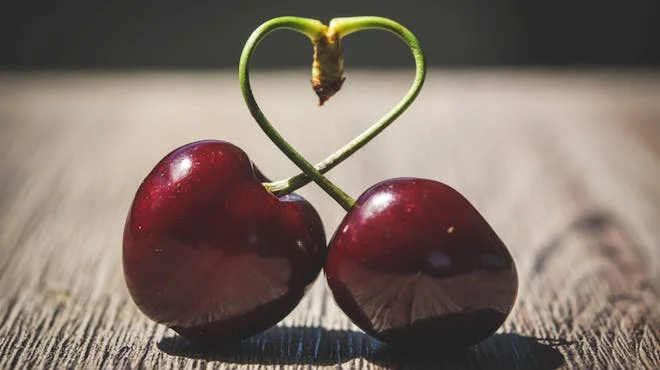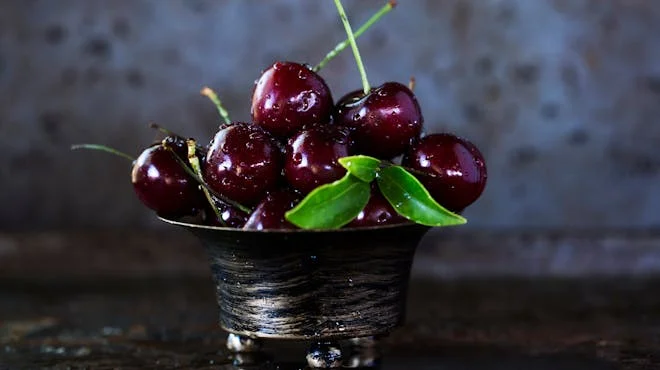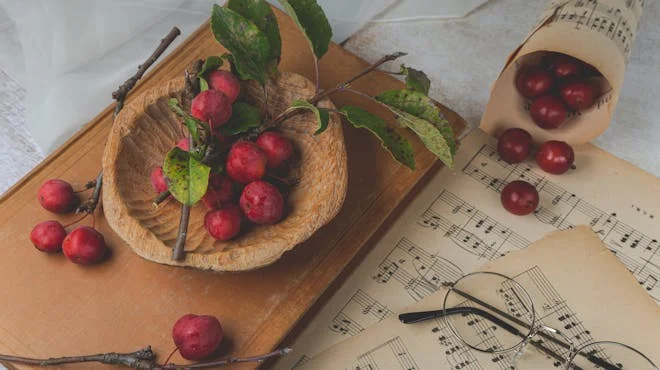
An Analysis
“This Is Just To Say” is a short poem written by William Carlos Williams, a prominent American poet and physician. First published in 1934, this poem has become one of Williams’ most well-known and beloved works. In this analysis, we will explore the themes, structure, and overall significance of “This Is Just To Say.”
This Is Just To Say by William Carlos Williams "I have eaten the plums that were in the icebox and which you were probably saving for breakfast Forgive me they were delicious so sweet and so cold"
Content
- The subject of the poem
- Line by line analysis of ‘This Is Just To Say’ by William Carlos Williams
- The symbolical and metaphorical meaning behind “eating plums”
- The theme of “This Is Just to Say” by William Carlos Williams
- Tone of the poem “This Is Just to Say” by William Carlos Williams
- The form and structure of “This Is Just to Say” by William Carlos Williams
- Literary devices used in “This Is Just to Say” by William Carlos Williams
- More about the author William Carlos Williams
The subject of the poem
“This Is Just to Say” by William Carlos Williams is about a speaker confessing to having eaten someone else’s plums, presumably without permission, and expressing a sense of guilt or apology for their actions. Despite its brevity, the poem mirrors themes of guilt, honesty, and human tendency to make mistakes.
Context of the poem
The poem was published in 1934 as part of William Carlos Williams’ collection titled “Spring and All.” Williams was a prominent figure in modernist poetry, known for his innovative approach to form and language. His work often focused on everyday experiences and objects, dressing them with deeper significance through his unique perspective.
Persona (narrator)
The persona in the poem is the speaker who confesses to eating the plums. While it is not explicitly stated, the persona is likely a representation of Williams himself or a fictionalized version of him.
The narrative is presented in the first person, with the speaker directly addressing the recipient of the confession.
Set
The setting of the poem is not explicitly described, focusing instead on the emotional and relational dynamics between the speaker and the recipient of the confession. The lack of specific setting adds to the universal appeal of the poem, allowing readers to relate to its themes on a broader level.
Line by line analysis of ‘This Is Just To Say’ by William Carlos Williams
“I have eaten”
The opening line immediately establishes the confession that serves as the central focus of the poem. Here, the poet utilizes a simple declarative sentence to convey the speaker’s admission of guilt. The straightforwardness of the statement underscores the sincerity of the confession, drawing the reader’s attention to the speaker’s actions. Additionally, the use of the participle verb “have eaten” suggests that the consumption of the plums has already occurred, setting the scene for the ensuing apology.
“the plums”
In this line, Williams employs synecdoche by using the word “plums” as a symbolic representation of temptation, desire, and indulgence. On a surface level, the plum is simply a fruit, but within the context of the poem, this take on deeper significance.
In addition, plums also represent something desired, as indicated by the speaker’s confession of having consumed them. By singling out the plums as the object of the speaker’s temptation, William Carlos Williams imbues them with symbolic meaning. Therefore, they become a metaphor for the things in life that we desire but may not be rightfully ours, whether that be literal possessions, emotional fulfillment, or personal gratification.
Furthermore, the specificity of the plums adds to their symbolic weight. Unlike a more generic term like “fruit,” the word “plums” conveys a sense of luxury. Plums are often associated with sweetness and richness, evoking sensory pleasure and desire. By choosing plums as the object of the speaker’s temptation, Williams heightens the poem’s emotional impact.
“that were in”
The phrase “that were in” serves as a transitional element, connecting the subject of the poem (the plums) with their location (the icebox). Williams utilizes enjambment here, carrying the reader seamlessly from one line to the next, mirroring the flow of the speaker’s thoughts. This technique creates a sense of immediacy, drawing readers into the speaker’s inner disturbance.
“the icebox”
Here, the poet introduces an “icebox” as the location where the plums were stored. The mention of the icebox adds a layer of physicality, grounding it in a specific setting within the speaker’s household. An icebox, typically used before the widespread availability of electric refrigerators, was a container kept cool by blocks of ice, used to preserve perishable items such as food. By referencing the icebox, Williams evokes a sense of the everyday and the ordinary, highlighting the mundane aspects of domestic life.
The icebox also serves as a symbol of preservation and the passage of time. It represents the space where the plums were kept, waiting to be consumed at a later time, likely for breakfast, as indicated later in the poem. This detail adds to the poem’s sense of specificity, allowing readers to visualize the scene and imagine the speaker’s interaction with the plums.
Furthermore, the mention of the icebox suggests a sense of temporality and impermanence. The plums, once stored in the icebox, are subject to decay and spoilage over time. In consuming the plums, the speaker disrupts the natural order of preservation and consumption, further underscoring the gravity of the action.

“and which”
In this line, the conjunction “and” serves to link the preceding description of the plums with the subsequent clause regarding their purpose. The word “which” introduces a relative clause that provides additional information about the plums, highlighting their significance to the recipient of the confession. This syntactical structure adds depth to the poem, inviting readers to consider the implications of the speaker’s actions.
“you were probably”
Here, Williams introduces the second-person pronoun “you,” directly addressing the intended recipient of the confession. The use of the adverb “probably” suggests a degree of uncertainty regarding the recipient’s expectations or intentions regarding the plums. Thus, this ambiguity adds tension to the poem, as the speaker struggles to confess his actions.
“saving”
The verb “saving” conveys the purpose for which the plums were intended, namely, to be reserved for future consumption. This word adds to the plums a sense of value and importance, reinforcing the magnitude of the speaker’s conduct. Through this brief statement, Williams underscores the contrast between the plums’ intended fate and their actual fate at the hands of the speaker.
“for breakfast”
The phrase “for breakfast” indicates the specific occasion for which the plums were intended to be consumed. Breakfast is often considered the most important meal of the day, providing nourishment and energy to start the morning. The act of saving the plums for breakfast implies a designated plan, which is important to the specific person.
However, by confessing to having eaten the plums, the speaker disrupts this planned sequence of events. The phrase “for breakfast” thus serves as a reminder of the breach of trust and the consequences of the speaker’s actions.
“Forgive me”
In this line, the speaker directly appeals to the recipient for forgiveness, acknowledging the wrongdoing inherent in their actions. The phrase also reflects the speaker’s vulnerability and desire for reconciliation, highlighting the emotional weight of his confession. Williams employs understatement here, allowing the shortness of the plea to underscore its sincerity and urgency.
“they were delicious”
Here, Williams employs understatement to downplay the speaker’s wrongdoing, framing it instead as a moment of pleasure. However, the speaker’s admission of the plums’ deliciousness also complicates the apology.
While the speaker acknowledges his wrongdoing for eating the plums, his enjoyment of the experience adds a layer of complexity to the emotions behind the apology. The juxtaposition of guilt and pleasure underscores the speaker’s humanity and the conflicting emotions that often accompany such actions.
Furthermore, the phrase “they were delicious” serves as a moment of honesty and vulnerability in the speaker’s confession. By acknowledging the sensory pleasure derived from the plums, the speaker demonstrates a willingness to confront the full extent of his actions. Thus, this line adds depth and authenticity to the apology.
“so sweet”
The adjective “sweet” serves as a sensory descriptor, evoking the taste of the plums and reinforcing their desirability. Through this vivid imagery, Williams appeals to the reader’s senses, inviting them to experience the same sensory delight described by the speaker. The alliteration of “s” sound in “so sweet” creates a sense of harmony and emphasis, further amplifying the sensory experience.
“and so cold”
In the final line of the poem, the word “cold” evokes sensations of coolness and refreshment, suggesting that the plums were not only delicious but also satisfyingly chilled. This sensory detail adds to the sensory richness of the poem, allowing readers to vividly imagine the experience of eating the plums.
Furthermore, the phrase “and so cold” serves as a moment of reflection and appreciation within the speaker’s confession. Despite the speaker’s acknowledgment of their wrongdoing and expression of remorse, they also take a moment to savor and appreciate the sensory pleasure derived from the plums. This detail adds depth to the speaker’s character, revealing their capacity for self-awareness and introspection.
Additionally, the phrase contributes to the poem’s overall tone and mood. The sensory imagery of the plums’ coldness contrasts with the warmth and intimacy of the speaker’s confession, creating a sense of tension and complexity. This juxtaposition underscores the conflicting emotions present within the poem, as the speaker grapples with feelings of guilt and pleasure.
The repetition of the conjunction “and” emphasizes the dual nature of the plums’ sensory experience. This highlights their multifaceted nature of human emotions. Through this vivid imagery, Williams leaves readers with a lingering impression on the complexity of human desire.
The symbolical and metaphorical meaning behind “eating plums”
In “This Is Just to Say” by William Carlos Williams, the act of eating plums can be interpreted metaphorically as temptation or indulging in desire. While on the surface, the poem describes a simple act of consuming fruit, the plums carry deeper symbolic significance within the context of the poem.
Plums are often associated with sweetness, richness, and sensory pleasure. In literature and art, they can symbolize abundance, desire, and temptation. By choosing plums as the object of the speaker’s temptation, Williams imbues them with symbolic meaning.
The speaker’s confession of having eaten the plums without permission can be seen as a metaphor for yielding to desire or acting impulsively. The plums, in this interpretation, represent the human tendency to give in to immediate gratification, even at the expense of others.
The theme of “This Is Just to Say” by William Carlos Williams
Guilt and Apology: Central to the poem is the theme of guilt and the act of apology. This theme highlights the speaker’s recognition of wrongdoing and the desire for reconciliation.
Temptation: The poem also touches on the theme of temptation and indulgence. The speaker describes the plums as “delicious” and “so sweet,” emphasizing the sensory pleasure derived from their consumption. This theme highlights the impulse to gratify one’s desires, even at the expense of others.
Communication and Miscommunication: Another recurring idea in the poem is the complexity of communication and the potential for misinterpretation. The speaker’s confession is simple and direct, yet it carries emotional weight and implications that may not be immediately apparent. Further, it highlights the challenges of conveying sincere apologies and the importance of empathy in interpersonal interactions.
Honesty and Integrity: A recurring idea in the poem is the importance of honesty and integrity in relationships. The speaker’s confession demonstrates a willingness to confront their actions and take responsibility for them, reflecting transparency.
Check this video of Helena Bonham Carter, reciting the poem “This Is Just to Say” Helena Bonham Carter: This is Just to Say by William Carlos Williams (youtube.com)
Tone of the poem “This Is Just to Say” by William Carlos Williams
The tone or mood of the poem is one of confession, remorse, and intimacy. The speaker’s tone throughout the poem is sincere and reflective, conveying a sense of vulnerability. Furthermore, there is an underlying feeling of guilt and regret.
The form and structure of “This Is Just to Say” by William Carlos Williams
The poem consists of four stanzas of four lines, with each line varying in length. This form contributes to the poem’s structured presentation, allowing for a clear progression of thought as the speaker confesses. The use of stanzas also provides a sense of rhythm and balance to the poem, creating pauses that allow readers to digest and reflect on each stanza’s content before moving on to the next.
The lines used are excessively short. Despite its brevity, the poem’s structure allows for a gradual unfolding of the speaker’s confession and apology, creating a sense of tension and anticipation as the reader progresses through each line.
Line breaks and pauses
Williams utilizes enjambment throughout the poem, with sentences flowing seamlessly from one line to the next without punctuation marks or pauses. This lack of punctuation serves to heighten the poem’s sense of urgency and intimacy, as the speaker’s thoughts spill forth in a continuous stream of confession. The absence of line breaks or pauses underscores the raw and unfiltered nature of the speaker’s emotions.
Rhyme scheme and rhythm
While “This Is Just to Say” lacks a traditional rhyme scheme, Williams incorporates subtle internal rhymes and echoes within the poem. For example, the repetition of the vowel sounds in “so sweet” and “so cold” creates a sense of sonic cohesion, enhancing the musicality of the poem.
The poet’s decision to refrain from a strict rhyme scheme and meter aligns with the modernist principles that informed much of Williams’ work. Additionally, the absence of consistent rhyme or meter highlights the poem’s authenticity.
Literary devices used in “This Is Just to Say” by William Carlos Williams
Imagery: Williams uses vivid imagery throughout the poem to evoke sensory experiences and enhance the reader’s understanding of the speaker’s emotions. For example, the description of the plums as “delicious,” “sweet,” and “cold” appeals to the reader’s senses.
Enjambment: The poem utilizes enjambment, the continuation of a sentence or phrase from one line to the next without punctuation, to create a sense of fluidity.
Alliteration: The poem features instances of alliteration, or the repetition of consonant sounds, which adds a musical quality to the language and enhances its impact. For example, the repetition of the “s” sound in “so sweet” emphasizes the sensory pleasure derived from the plums.
Synecdoche: Williams uses synecdoche, a figure of speech in which a part is used to represent the whole, in the line “the plums.”
Symbolism: The plums in the poem serve as a symbolic representation of temptation, desire, and indulgence.

More about the author William Carlos Williams
William Carlos Williams (1883–1963) was an American poet, writer, and physician, renowned for his innovative approach to poetry. Born in Rutherford, New Jersey, Williams grew up in a literary household, surrounded by books and encouraged in his artistic pursuits by his parents. His mother, Raquel, was a Puerto Rican of French Basque descent, and his father, William George Williams, was an English immigrant.
Williams attended the University of Pennsylvania, where he studied both English literature and medicine. Throughout his life, he balanced his careers as a poet and a medical doctor, often drawing inspiration from his experiences in the medical field for his poetry. This dual identity as a physician-poet deeply influenced his poetic style.
As a poet, Williams was associated with the modernist movement in literature, which sought to break away from traditional forms and explore new ways of expressing the human experience. He was particularly influenced by imagism, a poetic movement that emphasized clarity, directness, and the use of precise, concrete imagery.
Williams’ poetry is known for its spare, unadorned style and its exploration of American life and culture. He often drew inspiration from his surroundings, finding beauty and significance in the seemingly mundane aspects of everyday life. His most famous poem, “The Red Wheelbarrow,” exemplifies this approach, with its focus on a simple farm tool serving as a meditation.
Williams’ legacy continues to resonate in the world of literature, with his influence evident in the work of countless poets and writers.
For more of our poem reviews, please follow Life – PoemRead
RELATED POSTS
View all



